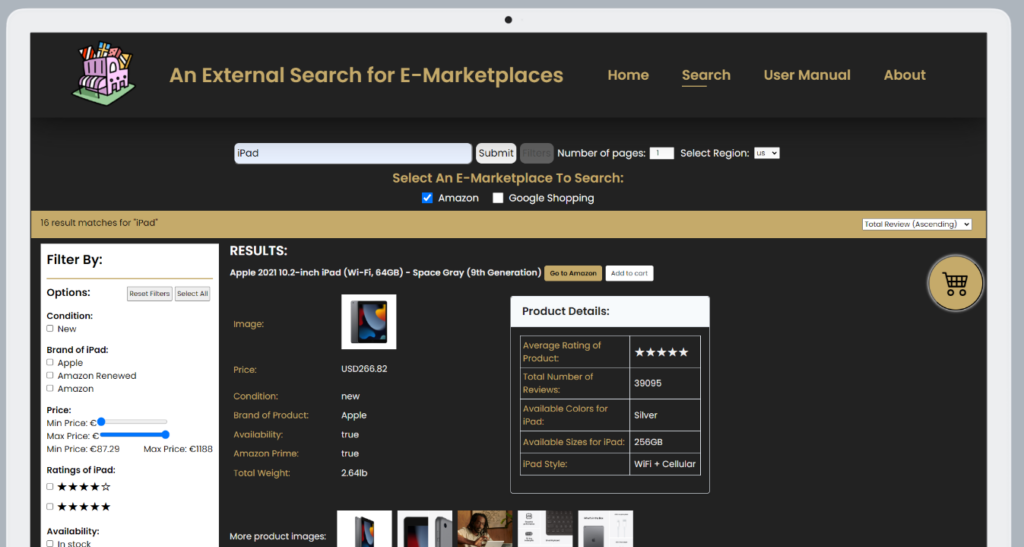E-marketplaces have flourished to the extent of becoming an integral part of modern-day commerce. With the rise of e-commerce, mainly due to the Covid-19 pandemic, there has been a major shift to online shopping. In some cases, it could be very challenging for customers to find exactly what they need. Hence, this project proposes a dynamic search-result filtering as a possible solution for overcoming this and other issues related to online shopping.
Current approaches frequently rely on filtering techniques, based on either comparing user profiles with comparable search-criterion features or the preferences of prior buyers ‒ or both. Although these methods have searched vast volumes of web data successfully, certain products would be still difficult to find and compare with others. As a result, consumers may become less confident in their ability to identify the right product, which may cause them to reconsider buying from the particular platform.
Dynamic filtering actively updates the filter criteria, based on the criteria searched. With every specific attribute selected through the filter, users would come closer to their preferred product. Therefore, applying this technique in e-commerce would ensure a better search experience, as users would only see results based on their specified preferences.
This project implemented a Google Chrome web extension add-on that would enable consumers to search through different e-marketplaces. Moreover, it would allow users to compare products in different marketplace regions and save any product to the cart for further review on the respective websites. To enhance their experience whilst browsing through products, users could utilise the dynamic search result filters on the left side of the screen. These would ensure that the products being displayed would be relevant to the users’ requirements or choices.
Furthermore, the facility to search through different e-marketplaces in one application by just marking a tickbox of the preferred e-marketplace would save time for anyone wishing to browse multiple e-marketplaces. It also helps the user to identify the site with the best product deals.
Being dynamically generated, the filters were designed to also change according to the choice of e-marketplace. For example, if the user were to search ‘iPad Pro’ and ticking ‘Amazon’ on the e-marketplace menu, if searching for the same item but ticking ‘Google Shopping’ , the filters would be different. The reason for this is that Amazon’s data on the chosen product would be different to that of Google Shopping, and the filters would only reflect the available data for a specific product at the particular marketplace.
In summary, by reducing the number of results and replacing them with more relevant search results tailored to each user, the user’s experience could be enhanced through the added feature of having more than one e-marketplace option. Additionally, the outcome of this project suggests that utilising the proposed application increased user engagement and satisfaction, by helping them find the right products.
It would be safe to conclude that, given today’s rapidly evolving e-commerce patterns, users would be able to find products more efficiently by installing a dynamic search-result filtering system.

Figure 1. Searching for an iPad by selecting Amazon as an e-marketplace
Student: Leon Zammit
Supervisor: Prof. Lalit Garg
